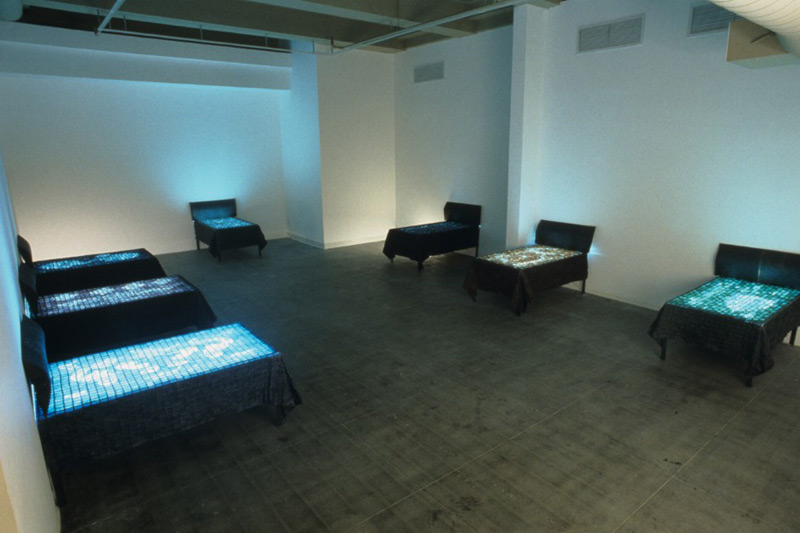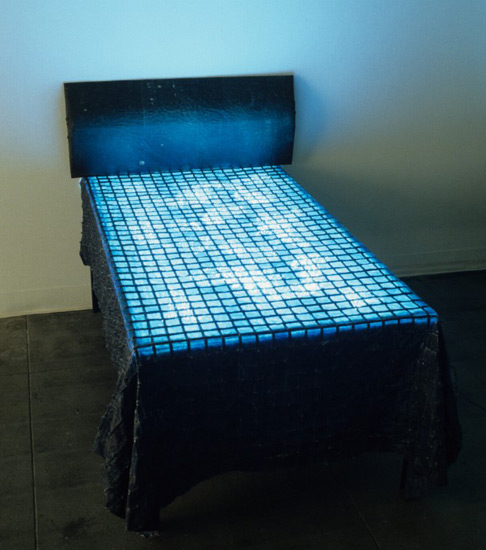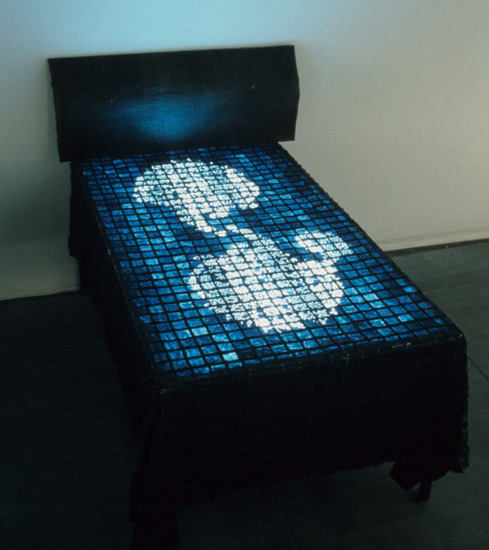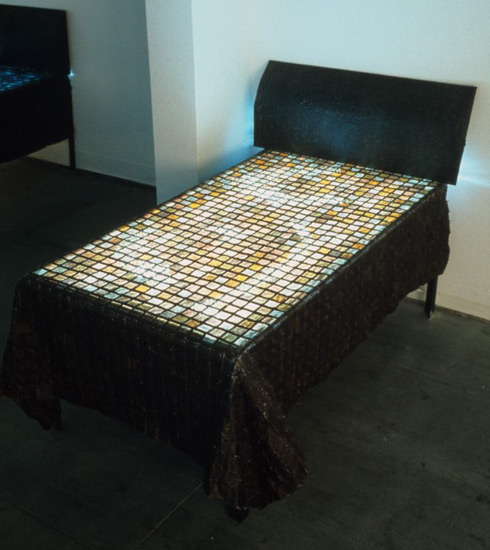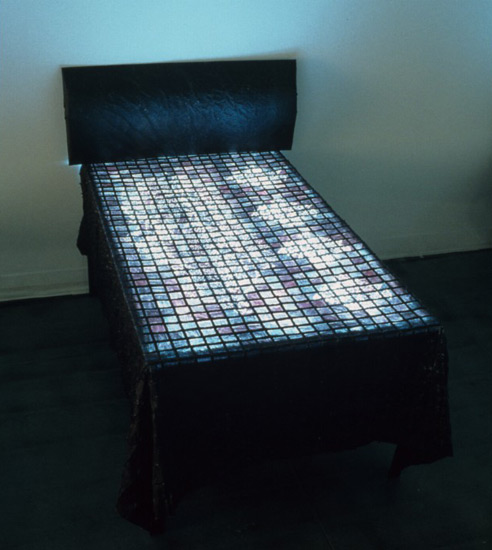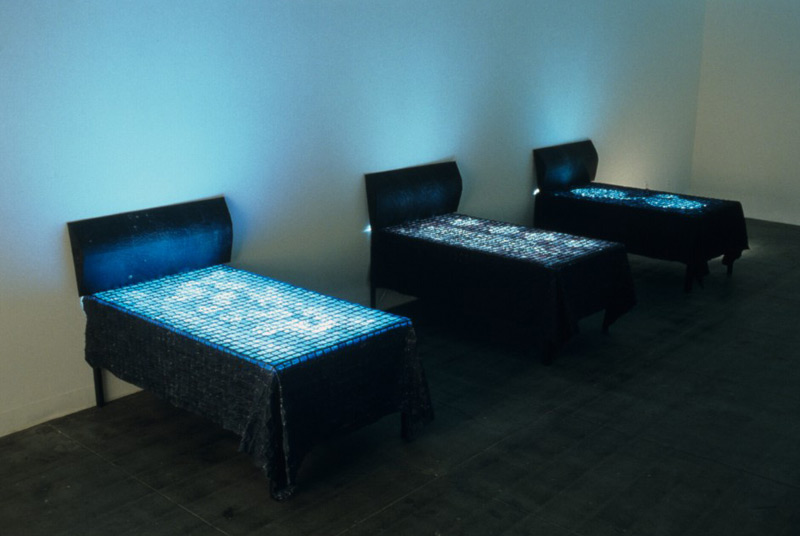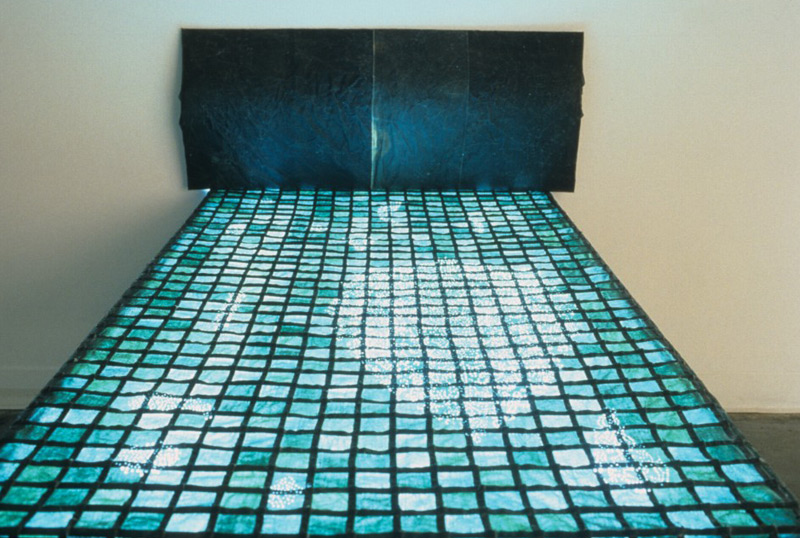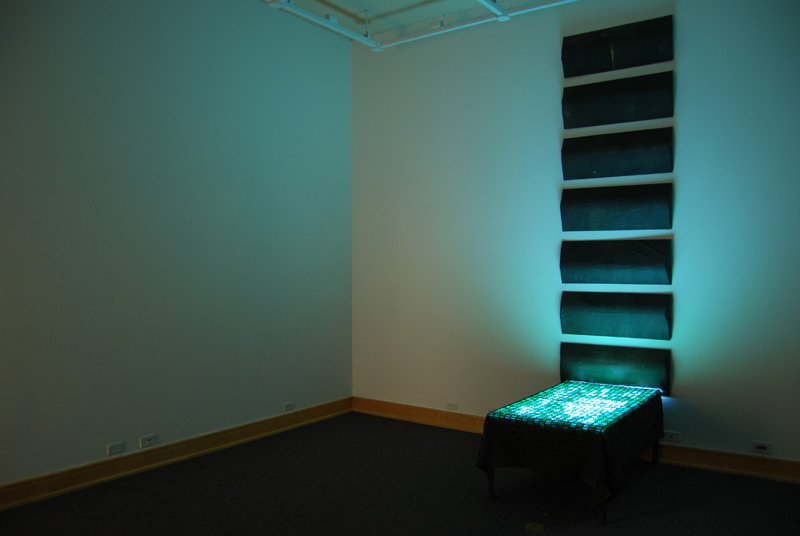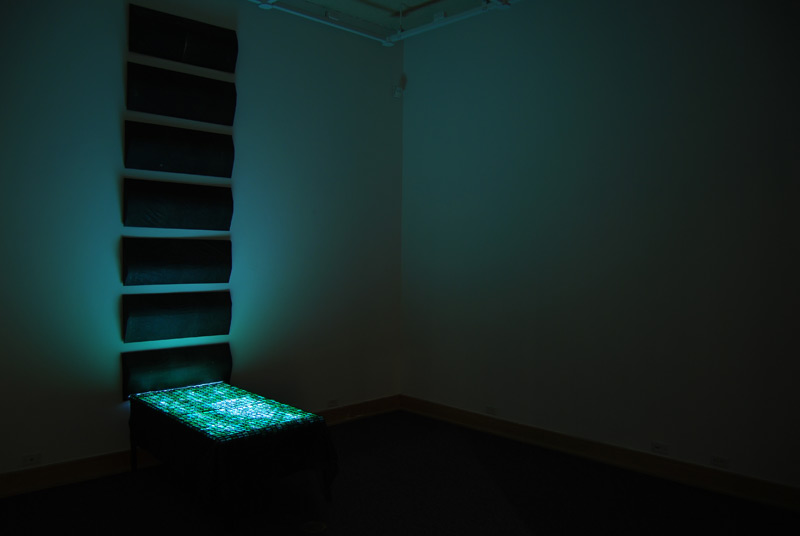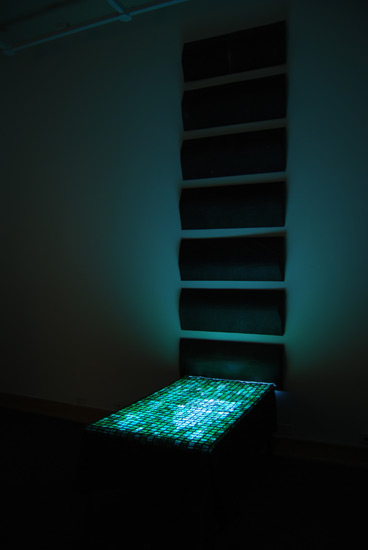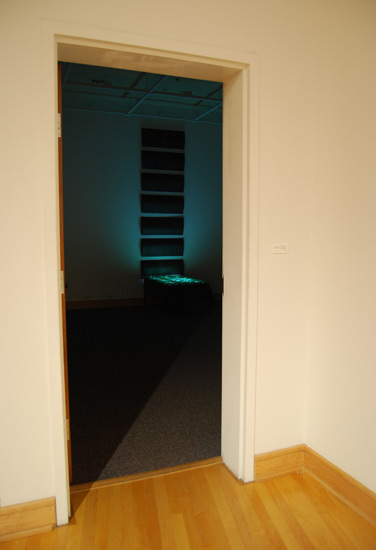Slumber the Nights
About This Project
As with Rachel Brumer’s two earlier installations — Cover Them (1997), which consisted of hanging quilts created as symbolic, protective memorials for young Holocaust victims, and Quire: Book of Findings (2001), which consisted of book forms dense with lines of hieroglyphic-like images — Slumber, The Nights implies the presence of the human body. Creating art that communicates so strongly about how one would touch, hold, wrap up in these objects comes naturally to Seattle–based Brumer, who danced professionally and then was a sign language interpreter before concentrating on visual art beginning in 1989.
An evocative installation of seven small beds arranged in a darkened room, Brumer’s Slumber, The Nights resonates on analytical and subconscious levels, a duality that is visually echoed in the bedcovers’ contrast of disciplined grids and free-flowing dotted lines. The bed as subject matter imparts multiple meanings, touching on so many aspects of our lives: sleep and procreation, comfort and restlessness, health and illness, birth and death. The overall environment, with its play of light and dark, of hard-edged fact and fluid suggestion, prompts intuitive responses, creating intimations of the familiar semi-conscious state between waking and sleeping, thinking and dreaming.
With black pillows hard against the wall and black material hanging down the sides, the highlight (both literally and figuratively) of each bed is the dyed, gridded, and pierced horizontal part of the bed covers. Draped over light boxes, each quilt features shades of monochromatic color sweeping over dark grid lines, ranged over by swirling lines of light-filled pinholes. Like Rorschach tests, the patterns created by these pinpoints of light suggest various images: leaves and tendrils, swimming creatures, lace, a strand of rope, a butterfly, a mask, stars in the sky. The general glow from the covered light boxes casts subtle colors on the walls, creating auras around each pillow. The small size of the beds and the whimsy of their light-radiating patterns conjure visions of childhood, and thus the sense of remembering that time.
Each installation of the seven beds will explore a different arrangement to take best advantage of each space, and meanings will vary accordingly. For its opening venue, the beds were lined up in two rows of three, with one at the head between the rows. This one bed seemed to hold sway, both through its placement and because it emanates more light. It casts more light because, even though the bedcover is entirely dyed shades of black, a greater number of pinholes perforate the entire horizontal surface in a lace pattern. Its dark tones and more controlled, less free-flowing pattern added to the sense of this bed as heading up the grouping. The arrangement and the small size of the beds suggested a children’s dormitory, such as a boarding school, summer camp, or orphanage. And though the room was dark and nighttime can imply vulnerability and hidden dangers, the overall feel of the installation was one of connecting to an inner peace, a realm of fantasy and possibility. This nighttime is one of pleasant dreams, arabesques of twinkling stars, communal comfort. Brumer’s vision honors dream life and imagination, nurturing and tenderness, the restorative powers of beauty, wonder, and contemplation.
– Ann Friedman



